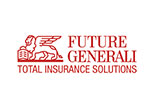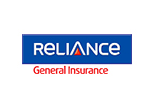Crash Test Insights: Deciphering NCAP Ratings in India
Global NCAP Safety Tests & Ratings
For most Indians, purchasing a car is a significant investment. Beyond the aesthetics, price, and fuel efficiency, a critical aspect that should influence your decision is the vehicle’s safety rating. This is where NCAP ratings come into play, serving as a reliable indicator of a car's safety level. In this blog, we'll delve into the nitty-gritty of NCAP ratings in India, offering valuable insights to help you make an informed and safe vehicle purchase.
What Does NCAP Rating Mean?
NCAP (New Car Assessment Programme) is a car safety performance assessment programme established to help consumers make informed choices when buying a vehicle. Below, we will outline what NCAP rating signifies and why it is essential for Indian buyers.
Understanding NCAP:
- Global Recognition: NCAP is globally recognized, with various countries having their own NCAPs, such as Euro NCAP, US NCAP, and Global NCAP, among others.
- Safety Evaluation: The program rigorously tests new cars and evaluates their safety features, focusing on how well a vehicle can protect its occupants and pedestrians during a crash.
- Rating System: NCAP provides a rating system, typically ranging from zero to five stars, with five being the highest possible safety score a vehicle can achieve.
- Consumer Awareness: It aims to increase consumer awareness regarding vehicle safety and encourage manufacturers to improve the safety measures in their vehicles.
Why NCAP in India:
With a surge in vehicle purchases and a notable rise in road accidents in India, understanding and considering NCAP ratings is crucial for buyers.
- Informed Decision: It helps consumers in India make knowledgeable decisions by providing them with information on the safety of the car.
- Safety Benchmark: NCAP sets a safety benchmark, encouraging manufacturers to enhance vehicle safety to meet consumer expectations and global standards.
- Reduction in Road Accidents: By choosing vehicles with higher safety ratings, buyers indirectly contribute to reducing the severity of injuries in road accidents, promoting overall road safety.

What is the Global NCAP Crash Test and How is it Performed?
Understanding Global NCAP Crash Test:
Global NCAP (New Car Assessment Programme) is a renowned, independent charity committed to ensuring high levels of vehicle safety worldwide. It offers a platform for cooperative, global, new-car assessment programmes to share best practices, and it promotes the adoption of these tested vehicles around the globe.
Performing the Crash Test:
- Frontal Impact Test: Conducted at 64 km/h, this test involves the vehicle crashing into a deformable barrier. It simulates a head-on collision with another car, evaluating the safety of the driver and front passenger.
- Side Impact Test: At 50 km/h, a mobile deformable barrier impacts the driver’s side door. It gauges the car’s capacity to safeguard occupants during a side collision.
- Pedestrian Protection Test: It assesses the safety provided to pedestrians in the event of a collision, focusing on the design of the front of the vehicle.
- Child Occupant Protection: The test measures the protection offered to child occupants in child seats.
Each test utilises dummies equipped with sensors, collecting data on the forces experienced during the crash. The results are then analysed to derive the safety ratings.
How Important is This Test When Buying a New Car?
- Safety Assurance: Safety should be a primary concern when purchasing a vehicle. Global NCAP tests offer a credible and unbiased assessment of a car’s safety features, providing a reliable benchmark for consumers.
- Informed Decision Making: A higher NCAP rating signifies better occupant protection, empowering buyers with crucial information that aids in making an informed decision.
- Value for Money: While cars with higher safety ratings might be pricier, they offer superior value in terms of passenger and pedestrian protection, making the investment worthwhile.
- Insurance Premiums: Vehicles with higher safety ratings may also attract lower insurance premiums, as they are deemed safer and less risky by insurance providers.
- Peace of Mind: Knowing your vehicle has undergone stringent safety tests and has fared well provides peace of mind when you’re on the road, ensuring that you and your loved ones are in safe hands.
How Does the NCAP Rating Work?
The NCAP rating provides a clear and effective way for consumers to compare the safety features of various vehicles. Below are the elements that make up the NCAP rating system:
1. Star Rating:
- Vehicles are awarded stars based on their performance in high-speed front and side crash tests, a rollover test, and evaluations of seat/head restraints for protection against neck injuries in rear impacts.
- The ratings usually range from zero to five stars, with five-star ratings signifying the highest level of safety.
2. Safety Categories:
- Adult Occupant Protection: This evaluates the safety of the driver and front passenger in the vehicle.
- Child Occupant Protection: This assesses the vehicle’s ability to safeguard child occupants in child seats.
- Safety Assist: Here, active safety technologies of the vehicle, such as electronic stability control, are evaluated.
- Pedestrian Protection: This focuses on the vehicle’s design to minimise harm to pedestrians in an accident.
3. Safety Features Evaluation:
The rating also considers safety features like airbags, anti-lock brakes, and electronic stability control, among others.
4. Overall Score:
Vehicles receive an overall score which is a composite of the scores from all tests and categories, providing a quick reference for consumers.
Does the NCAP Rating Affect Car Insurance?
Understanding how NCAP ratings interact with car insurance premiums is crucial for buyers:
1. Safety Discount:
Insurance companies often offer discounts on insurance premiums for cars with higher safety ratings. A high NCAP rating indicates a lower risk of severe injuries in accidents, potentially leading to fewer medical claims.
2. Risk Evaluation:
Insurers assess the risk associated with insuring a vehicle. Cars with superior safety features and high NCAP ratings are often viewed as lower risk, which may result in lower premiums.
3. Investment in Safety:
While vehicles with higher NCAP ratings might come with a steeper price tag, the potential savings on insurance premiums over time can offset the initial cost.
4. Enhanced Resale Value:
Cars with better safety ratings not only provide peace of mind but also tend to retain their value better in the resale market.
Is your Vehicle Fully Protected even with a high NCAP Rating?
As we have seen above the higher the NCAP rating the more safe the car is for travelling purposes. However, purely relying on NCAP won’t help you cover your financial losses in case of an accident.
Hence, buying car insurance, with all the necessary add-ons, becomes extremely important for all-round safety of your car. Buying comprehensive car insurance with the highest number of coverages should be ideally bought. Secondly, ensuring that you are renewing your car insurance policy every year would ensure that you travel stress-free and continue to enjoy maximum benefits revolving around the safety of your car.
Some of the top coverages/add-on covers for your car are -
- Zero Depreciation Add-on Cover: This cover ensures that the value of the parts present in your car doesn’t go down in value over time. Hence, during a time of claim, you get coverage equivalent to the original value of the car parts.
- Consumables Add-on Cover: This cover ensures that any nuts, bolts, oil, etc that need to be changed after an accident is covered and taken care of
- Roadside Assistance Add-on Cover: If your car breaks down, simply communicate with the insurance company, and they will help in towing your car to the nearest service station.
- Engine Protection Add-on Cover: The engine is one of the most important parts of a car, and hence regular wear & tear is bound to happen, this cover helps you safeguard the health of your engine for maximum performance.
- Key-Loss Add-on Cover: Car keys can be expensive and hence losing one can bring a lot of strain on your pocket, by buying a key-loss add-on cover you safeguard yourself from any such mishap.
- Passenger Assistance Add-on Cover: This cover ensures that the passengers travelling with you are protected and taken care of in case of any accident-related hospitalisation.
- Tyre Damage Add-on Cover: Tyres are also a very important part of your car and ensuring that the tyres are in top condition is very important. Tyre cover add-on cover ensures the replacement of tyres in case of a bad event.
- Return to Invoice Add-on Cover: This special cover provides you with the full value of your car in case of theft, or total loss or damage. This cover helps you get the full invoice value that you paid while buying the car, the only catch being that this cover is available only till the first 3 years of buying the car
- Protection of NCB Add-on Cover: NCB or No Claim Bonus incentivizes car owners to get additional discounts on their premiums if a claim isn’t taken in prior years. As the car gets older the NCB discount also gets higher if you don’t make a claim in continuous subsequent years. Hence, to safeguard the NCB percentage, NCB Add-on cover comes to the rescue thereby protecting your NCB value even if you were to take a claim this year.
- Loss of Personal Belongings Add-on Cover: During an unfortunate event of your laptop, phone, or wallet being stolen from your car, loss of personal belonging cover ensures that you are compensated fairly for this loss.
How Does Global NCAP Select Cars for Tests?
Global NCAP aims to enhance public awareness about vehicle safety and thereby push manufacturers to improve their offerings. The process of selecting cars for testing is both systematic and strategic:
1. Market Popularity:
One of the primary criteria is the car's popularity in the market. Vehicles with higher sales figures are often chosen because they represent a significant portion of the market, and their safety ratings can influence a larger group of consumers.
2. Variability in Safety Features:
Global NCAP often selects models that offer different safety features in different markets. Such a comparison provides insights into how a specific car model's safety varies across regions.
3. Public Interest:
Cars that generate significant public interest or are awaited with bated breath might be selected for tests to provide potential buyers with essential safety information before purchasing.
4. Manufacturer's Claims:
If a car manufacturer advertises their vehicle as being exceptionally safe or includes new safety features, Global NCAP might test the car to validate these claims.
Do All Cars in India Have a Global NCAP Rating?
No, not all cars in India have been tested and rated by Global NCAP. Here's why:
1. Extensive Car Market:
India has a vast and diverse automobile market with a myriad of models and variants. It's impractical for Global NCAP to test every single vehicle.
2. Priority-Based Selection:
As mentioned earlier, Global NCAP tends to prioritise cars based on their market popularity, safety feature variability, public interest, and manufacturer claims. Thus, while many best-sellers and significant models have been tested, others might not yet have been evaluated.
3. Voluntary Submission:
Car manufacturers can voluntarily submit their models for testing. However, not all manufacturers choose to do this.
4. Introduction of Bharat NCAP:
India is in the process of introducing its own New Car Assessment Programme, called Bharat NCAP. With its introduction, a more extensive range of cars available in the Indian market will likely be tested, providing consumers with more comprehensive safety insights.
Global NCAP rating for Indian cars
The following illustrates some of the Global NCAP ratings for popular cars in India.
|
Sl. No. |
Car |
GNCAP Rating - Adult Occupant score (Maximum 17 points) |
GNCAP Rating - Child Occupant score (Maximum 49 points) |
Ex-showroom price |
|
1 |
Volkswagen Virtus/Skoda Slavia |
5 stars (29.71 max. 34 points)* |
5 stars (42.00) |
Rs. 11.39 lakh to Rs. 18.60 lakh |
|
2 |
Skoda Kushaq/Volkswagen Taigun |
5 stars (29.64 max. 34 points)* |
5 stars (42.00) |
Rs. 11.55 lakh to Rs. 19 lakh |
|
3 |
Mahindra Scorpio N |
5 stars (29.25 max. 34 points)* |
3 stars (28.93) |
Rs. 12.73 lakh to Rs. 24.03 lakh |
|
4 |
Tata Punch |
5 stars (16.45) |
4 stars (40.89) |
Rs. 5.82 lakh to Rs. 9.48 lakh |
|
5 |
Mahindra XUV300 |
5 stars (16.42) |
4 stars (41.66) |
Rs. 8.42 lakh to Rs. 12.38 lakh |
|
6 |
Tata Altroz |
5 stars (16.13) |
3 stars (29.00) |
Rs. 6.20 lakh to Rs. 10.15 lakh |
|
7 |
Tata Nexon |
5 stars (16.06) |
3 stars (25.00) |
Rs. 7.54 lakh to Rs. 13.80 lakh |
|
8 |
Mahindra XUV700 |
5 stars (16.03) |
4 stars (41.66) |
Rs. 13.18 lakh to Rs. 24. 58 lakh |
|
9 |
Honda Jazz |
4 stars (13.89) |
3 stars (31.54) |
Rs. 7.90 lakh to Rs. 10.21 lakh |
|
10 |
Toyota Urban Cruiser |
4 stars (13.52) |
3 stars (36.68) |
Rs. 9.02 lakh to Rs. 11.73 lakh |
|
11 |
Mahindra Marazzo |
4 stars (12.85) |
2 stars (22.22) |
Rs. 13.18 lakh to Rs. 15.35 lakh |
|
12 |
Mahindra Thar |
4 stars (12.52) |
4 stars (41.11) |
Rs. 13.53 lakh to Rs. 16.02 lakh |
|
13 |
Tata Tigor |
4 stars (ICE - 12.52/EV - 12) |
3 stars (34.15) |
Rs. 5.97 lakh to Rs. 8.56 lakh |
|
14 |
Tata Tiago |
4 stars (12.52) |
3 stars (34.15) |
Rs. 5.37 lakh to Rs. 7.79 lakh |
|
15 |
Maruti Suzuki Brezza |
4 stars (12.51) |
2 stars (17.93) |
Rs. 7.84 lakh to Rs. 11.33 lakh |
|
16 |
Renault Kiger |
4 stars (12.34) |
2 stars (21.05) |
Rs. 5.99 lakhs to Rs. 10.57 lakh |
|
17 |
Honda City (4th Generation) |
4 stars (12.03) |
4 stars (38.27) |
Rs. 9.50 lakh to Rs. 9.99 lakh |
|
18 |
Nissan Magnite |
4 stars (11.85) |
2 stars (24.88) |
Rs. 5.88 lakh to Rs. 10.36 lakh |
|
19 |
Renault Triber |
4 stars (11.62) |
3 stars (27.00) |
Rs. 5.88 lakh to Rs. 8.45 lakh |
|
20 |
Kia Carens |
3 stars (9.30) |
3 stars (30.99) |
Rs. 9.59 lakh to Rs. 16.60 lakh |
Final Thoughts:
While Global NCAP ratings are incredibly valuable for Indian consumers, it's essential to understand that not all cars in India have been rated by them. However, consumers should use the available ratings as a reference point while also considering other safety assessments and features when purchasing a vehicle. Always prioritise safety, for it's not just an investment in a car but in the well-being of yourself and your loved ones.
FAQs
- What is the main objective of the global NCAP ratings?
The primary purpose of global NCAP ratings is to inform consumers about a car's safety so they can make well-informed decisions when buying one.
- To what extent can one trust the Global NCAP ratings and tests?
Global NCAP testing is carried out in compliance with international standards, in rigorous and regulated conditions. They are trustworthy and widely acknowledged as markers of car safety.
- Does a car with a better NCAP score ensure that there won't be any injuries in collisions?
No rating system can ensure that injuries from accidents are completely avoided. Higher NCAP ratings do, however, suggest that the car provides superior crash safety for its passengers.
- Can NCAP ratings affect Indian auto insurance rates?
Yes, insurance companies frequently view cars with better NCAP ratings as lower risk, which may lead to cheaper insurance prices.
- Do all cars have to go through the Global NCAP testing programme?
No, it's not required. Nonetheless, in order to demonstrate their dedication to safety, automakers frequently willingly submit their cars for testing.
- Is the evaluation of automotive safety based solely on NCAP ratings?
Although NCAP ratings are important, consumers should also take into account additional safety features and, if available, crash test results from other organisations.
- What is the frequency of NCAP rating updates?
Every time a new test is administered, ratings are updated. A model's testing frequency is determined by a number of factors, such as market releases, popularity, and any major redesigns or updates to safety features.
- What distinguishes the Bharat NCAP from the Global NCAP?
While Bharat NCAP will concentrate on cars available in the Indian market and use methods more appropriate to the driving conditions and traffic laws of India, Global NCAP will evaluate a wide range of car models around the globe.
- Is an automobile considered the safest alternative if it has a five-star rating?
Excellent crash test results and safety features are indicated with a five-star rating, however, this is dependent on the vehicle's class. A good picture of safety levels can be attained by buyers comparing ratings among vehicles in the same category.
- In what location may buyers locate the NCAP ratings of particular car models?
The official Global NCAP website provides NCAP ratings, and official documentation and webpages for auto manufacturers' vehicles frequently include references to these ratings.














































